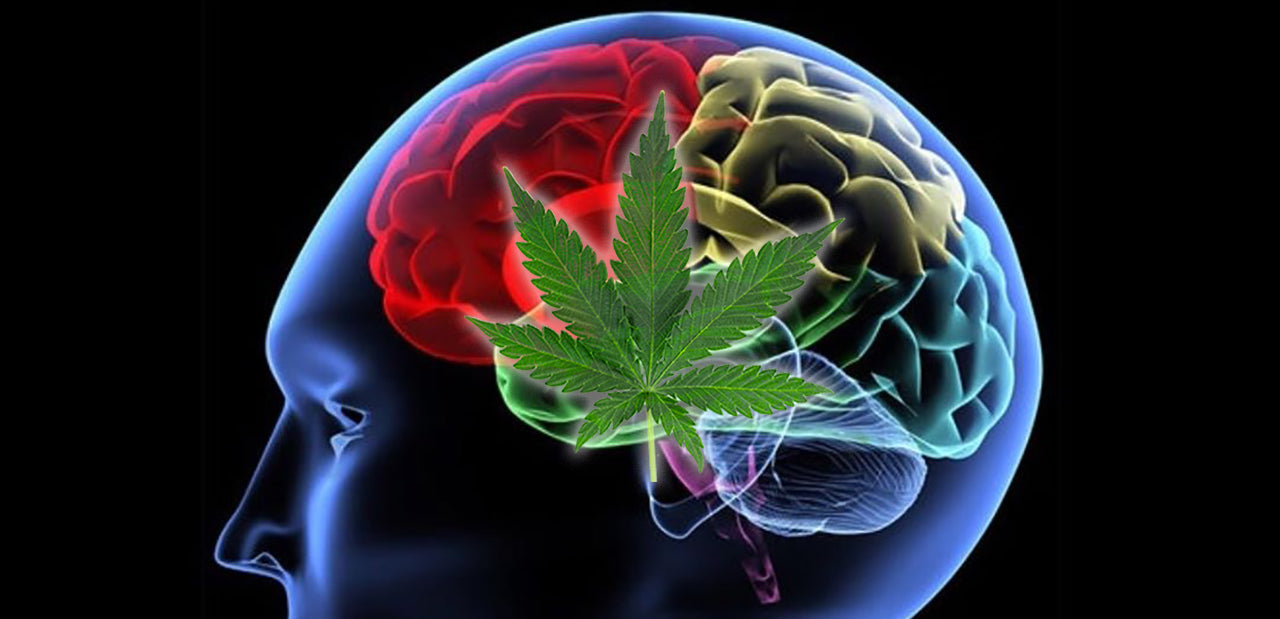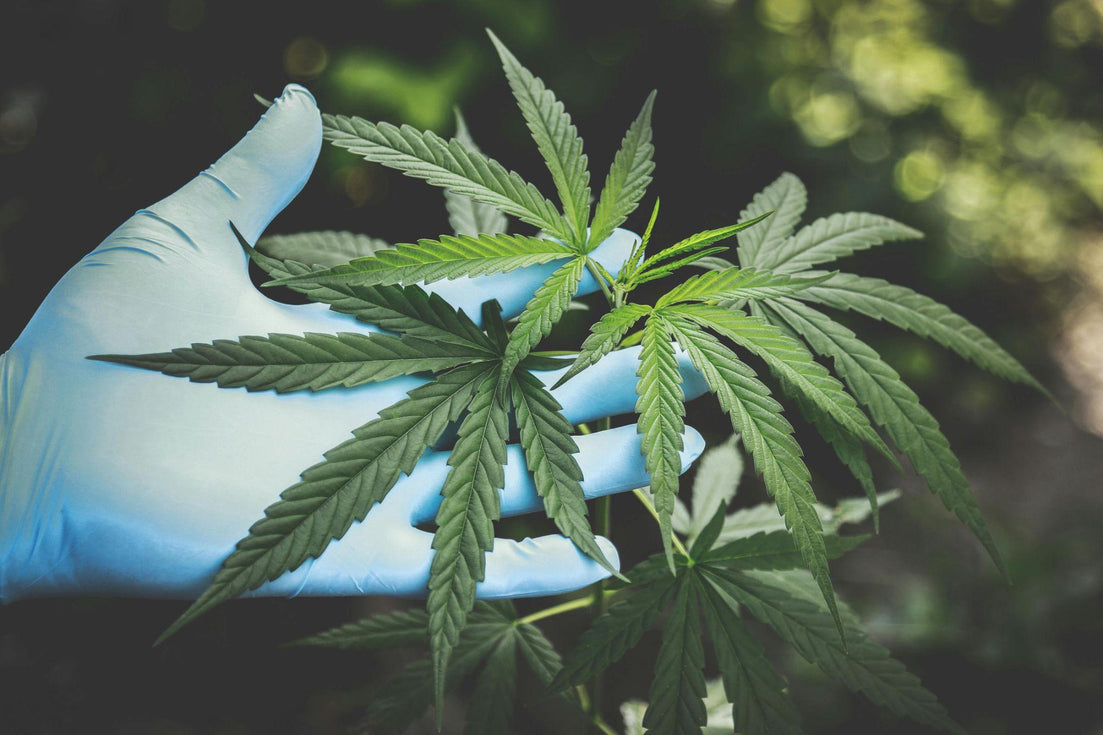Your cart is currently empty.

Intro:
Sometimes, even for cannabis users, life can get more than a little rough and you might end up dealing with something life-changing and debilitating like Parkinson's disease. Parkinson’s (or Mal Del Parkinson, from the French terminology) is a progressively worsening brain and nervous system disorder that can adversely affect your movement with shaking and stiffness, as well as difficulty with talking, walking, balance and coordination.
If you’re wondering ‘Is Parkinson’s curable?’ we can tell you that, at this time, Parkinson's disease can't be cured; however, there are medications that can help control disease symptoms, and one of those medications is cannabidiol, CBD. Because of legal prohibitions against cannabis products from plants like hemp and marijuana, which have only recently begun to be legalized, studies on CBD oil for Parkinson’s are limited, but there are doctors and patients who are exploring cannabidiol as a supplemental or alternative treatment for Parkinson’s disease symptoms.
Pain and stiffness are part of Parkinson’s disease, as are depression and anxiety as patients struggle to deal with coordination and mobility issues, plus facial muscles freezing, swallowing problems, even lightheadedness and fainting. There are close links between Parkinson’s and pain, and there are connections between Parkinson’s and anxiety – they feed off from each other; as the person with the condition struggles with the disabilities Parkinson’s causes with speech and movement, they become frustrated, despondent and depressed. Cannabidiol has been found to be effective with managing and treating a wide range of maladies and conditions from chronic pain to depression and stress, as well as muscle spasms, sleep problems, inflammation, digestion disorders, and a multitude of other problems Parkinson’s disease patients experience. CBD is not a panacea, it is not a quick fix or even necessarily a cure, but it can alleviate some of the negatives and restore a little quality of life.

(Parkinson's Disease Facts, image from The Helping Hand Company on Instagram)
So, after you smoke, vape or ingest some cannabidiol, what does CBD do in your body? How does it work? Cannabidiol works with your body’s own endocannabinoid system to reduce pain sensation, decrease inflammation and bring about homeostasis, balancing the function of your nervous system and organs. Endocannabinoid receptors are present throughout your body – in every major system: heart, lungs, brain and nervous system, digestion and more – CB1 endocannabinoid receptors are located in your brain and throughout your central nervous system; CB2 receptors are core components of the immune system, cardiovascular and muscular systems. Cannabidiol bonds with the CB1 and CB2 receptors boosting the functionality of those receptors and equalizing any endocannabinoid deficit – which can cause headaches, irritability, and overall imbalance of normal body systems’ performance.
Many of the speech, movement and coordination issues caused by Parkinson’s disease is as a result of dopamine depletion – cells in the substantia nigra part of the brain, which produce dopamine, begin to die and this dopamine loss in the brain leads to the symptoms experienced by Parkinson’s sufferers. CBD boosts dopamine – so, while not a cure-all, CBD can alleviate some of the debilitating effects of Parkinson’s.
Best of all, there are no serious complications or side effects associated with cannabidiol, as opposed to some conventional pharmaceutical drugs. In fact, some consider CBD to be a natural cure for Parkinson’s medication side effects – for example, Sinemet (the brand name of carbidopa-levodopa) is used to treat Parkinson’s symptoms like muscle stiffness, essential tremors, spasms, and poor muscle control, but its side effects include dizziness, nausea, vomiting, loss of appetite, muscle pain, trouble sleeping, headache, and potentially, mental and emotional changes such as confusion, depression, hallucinations, anxiety and thoughts of suicide. CBD just happens to have a reliable reputation for helping to deal with all of those Parkinson’s problems.
So, cannabidiol can counteract symptoms of Parkinson’s as well as reduce the side effects of other medications.

(Michael J Fox quote on CBD, image from Pure Chemistry 2 on Instagram)
Dosing CBD oil for Parkinson’s
How do you take CBD for Parkinson’s? When it comes to how to administer CBD oil for Parkinson’s most effectively, that depends because CBD comes in many different forms – CBD is one of the many cannabinoids in marijuana, so you can smoke or vape weed or even cannabis concentrates to get some fairly immediate benefit from the CBD therein; cannabidiol also comes in isolated tincture, full-spectrum hemp oil, CBD and hemp pills, edible CBD and even topical creams and CBD patches. Sublingual drops under the tongue and smoking or vaping are generally much faster – delivering effects within minutes, and they are more intense means of using marijuana or CBD, while edible forms and pills take a little longer to take effect – 20 minutes to several hours, because they have to pass through your digestive tract first, but their effects last longer. Topical creams or patches tend to be a slower release method and are generally best at delivering pain relief to a specific area – though CBD from patches does get eventually absorbed through your skin and into the body and bloodstream, thus distributed throughout the body, but this process could take hours.

(How to take CBD sublingually, image from TrustGaia.Com)
For cannabidiol, the preferred method of use tends to be CBD oil or hemp oil. So, which CBD oil is best for Parkinson’s? Like any medical marijuana or CBD dosing issue, it would depend largely on what you want to get from it as well as your individual physiology. Straight CBD isolate would offer a Parkinson’s patient the most potent anti-oxidant, anti-inflammatory, and neuroprotectant properties of CBD; but some prefer CBD in full-spectrum hemp oil for Parkinson’s or other chronic conditions, which has a lower amount of CBD (2-3%), practically zero THC (.03% or less), but more in the way of healthy fats and mineral content – and other trace cannabinoids like CBG (good for slowing bacterial growth, reducing inflammation, inhibiting cell growth in cancer tumor cells, and promoting bone growth), CBC (which treats cancer cell tumors; CBC also increases the viability of developing brain cells – a process called neurogenesis), and CBN (effective aiding sleep, as well as regulating the immune system and relieving the pain and inflammation caused by chronic conditions like Parkinson’s). Certainly, a Parkinson’s patient could use both straight CBD and hemp oil together without worry – they should complement each other nicely; or, in other words, why not both?

(Endocannabinoid system, image from Eucalov This on Instagram)
Now what is a good CBD dose for Parkinson’s? According to one Department of Neuropsychiatry and Medical Psychology an oral dose of CBD, beginning with 150mg a day for four weeks alongside normal treatment regimens, shows a decrease in psychological symptoms of Parkinson’s sufferers. From a published summary of dosing regimens from various other CBD and Parkinson’s studies compiled by Dr. Ethan Russo, 300mg per day of CBD oil can significantly improve quality of life for patients; also, 75-300mg of oral CBD improved REM-behavior sleep disorder, which can be associated with Parkinson’s disease. Regular amounts of CBD from 150mg on up has been shown to have major medicinal benefits for patients suffering from insomnia, depression, and anxiety – all of which are fairly usual byproducts of the disease.
While it is always wise to first consult with your doctor, and to use CBD in conjunction with regularly prescribed medications, the fact that cannabidiol has no significant side effects or interactions with other medications means that users can generally self-medicate by starting with a small dosage and working up to a larger dosage. While some users can consume up to 2000mgs of CBD daily without adverse effects, middle-range doses seem to be the most effective – and again, consulting with a medical professional is advised.

(Hemp oil Benefits, image from Eucalov This on Instagram)
CBD, Marijuana and Parkinson’s
THC, or tetrahydrocannabinol, is the largest cannabinoid concentration in most weed strains, and THC also has some benefit for Parkinson’s patients. THC has proven helpfully healthful to those inflicted with Parkinson’s by reducing nocturnal agitation, restoring sleep and boosting appetite, as well as vastly improving mood; in select studies, nursing home patients in California with essential tremors or dementia have found similar benefits, reducing the need for nursing assistance and lowering the required amounts of other drugs. Though there is some concern among medical professionals about the psychoactive effects of THC, when combined with CBD – which mitigates or lessens the psychoactivity of THC – there are discernable mental and medical plusses to using marijuana to help alleviate the symptoms of Parkinson’s. With increasing legalization of medical and recreational marijuana in the United States and around the world, researchers are becoming freer to do more research on the promising relationship between marijuana and Parkinson’s patients.
One major effect that THC seems to have is an increase in dopamine levels, the lack of which causes the tremors and movement issues of Parkinson’s – however, dopamine is also a chemical that interacts with the pleasure centers in your brain, just like when you smoke high-THC pot, have sex, eat chocolate or drink something really tasty; the pleasure that you feel is actually the result of heightened dopamine levels. Now that doesn’t mean that the THC in weed totally cures Parkinson’s, but it can make the symptoms far less severe. THC and dopamine interact indirectly via the endocannabinoid system: THC stimulates your body’s own endocannabinoid production, which in turn suppresses GABA inhibitor neurons – GABA inhibitor neurons limit dopamine production, but when they themselves are subdued, dopamine production actually increases, and so Parkinson’s symptoms then decrease.
There is a pharmaceutical product manufactured by British company GW Pharmaceuticals, called Sativex, that is made from cannabis and has been prescribed to Parkinson’s patients. Sativex is delivered via a peppermint-flavored mouth spray, so it is sublingual and thus fast-acting. Sativex is made directly from cannabis plants, so it is not a form of synthetic marijuana – which has gained some notoriety for dangerous side effects. Sativex is manufactured with a 1:1 THC to CBD ratio – so it contains cannabidiol as a balance against the psychoactive effects of THC. The major plus to Sativex is that unlike medical marijuana, it can be covered by health insurance. The downside is that there is no benefit in cost over actual marijuana and, overall, people seem to prefer pure pot over something formulated by a pharmaceutical company. Another negative is that, currently, Sativex is not available in the United States, although it is currently awaiting FDA approval as a treatment for cancer pain, multiple sclerosis and Parkinson’s symptoms. Sativex side effects are similar to those of cannabis – dry mouth, dry eyes, nausea, dizziness, nervousness – but, because it is a mouth spray, there have been some reports of sore throat and a burning sensation in the mouth.
Parkinson’s patients use marijuana to stop or reduce uncontrolled tremors, but there are casual users and some non-Parkinson’s medical marijuana patients who have reported uncontrollable shaking after smoking weed. There are two possible causes for these shakes after smoking weed – one is high-THC marijuana causing anxiety attacks, which is not all that unusual; another cause is mixing weed and tobacco, which is a stimulant. Generally, these things pass quickly enough just by stopping smoking or consuming cannabis until the shaking symptom wears off (usually within an hour or so) or by taking a vape hit of CBD or some sublingual CBD drops to counteract the THC jitters. While some weed use side effects can be a little unsettling, generally marijuana is benign and none of the side effects are life threatening – that said, when in doubt, visit your nearest emergency room or urgent care clinic, just to be on the safe side.

(Essential oils for Parkinson's, image from The Oil Loft on Instagram)
There are also essential oils for Parkinson’s that work in concert with CBD to help alleviate some of the symptoms associated with Parkinson’s disease such as depression, sleep trouble, skin inflammation and digestive issues. For example, the essential oils (essential as in essence of a particular plant) helichrysum and frankincense oil may reduce inflammation of the brain, and vetiver oil could possibly reduce tremors. There are a whole host of different essential oils that potentially could provide relief for those patients plagued with Parkinson’s:
- For pain, there is sweet marjoram, lavender, petitgrain, helichrysum, peppermint, ginger, black pepper, and more.
- For psychological health, there is frankincense, lavender, rose, mandarin, neroli, and helichrysum.
- For anti-inflammatory properties, patients could try myrrh and frankincense.
- For nausea, peppermint and spearmint is recommended.
- For hormone regulation, Parkinson’s sufferers could try thyme and coconut.
- For better brain and nerve function, coconut may be helpful.
As with CBD, marijuana or any treatment you may want to try to improve Parkinson’s symptoms, it is recommended that you run these things by a qualified physician, physician’s assistant or nurse practitioner.
CBD, essential oils, marijuana and Parkinson’s prescription meds can all be part of an arsenal for people battling the debilitating, disabling effects of this long-term degenerative disorder.
Summary:
For people suffering the ravages of a disease like Parkinson’s – or their loved ones who watch them struggle – any relief is more than welcome; and the possibility of a natural cure for Parkinson’s, or any promising treatment regimen, brings hope.
Is Parkinson’s curable? At this time, no; but many dedicated and talented medical researchers are working towards that goal. There are, however, medicines and alternative treatments for Parkinson’s, like marijuana and CBD, that can alleviate the discomfort and movement issues that result from the loss of dopamine-producing cells in the brain. Pain, movement issues and depression can be treated with CBD oil for Parkinson’s; relief can also be found by vaping or smoking CBD or marijuana. Which CBD oil is best for Parkinson’s depends on the patient’s individual needs – sublingual CBD works almost immediately and targets symptoms strongly; some prefer hemp oil because of added benefits of the other cannabinoids, plus hemp is an excellent source of vitamin E and minerals, and hemp has omega-3 fatty acids that inhibit inflammation in the brain and are important for good muscle activity and cell growth.
Figuring the best CBD dosage for Parkinson’s disease and how to administer CBD oil for Parkinson’s is also dependent on the particular patient. Medium-range doses around 300 to 600mg daily tend to be effective for many people, but pain level, body size and general metabolism can also be factors; on average, a good general rule for proper CBD dosage is to take 1 to 6mg of CBD for every 10 pounds of body weight. And as to how to intake CBD, sublingual drops and vaping are the fastest and strongest; but edibles like gummies take longer to take effect, and then tend to last longer in terms of symptom relief.
Also effective for managing the manifestations of Parkinson’s is medical marijuana use – including the new derivative pharmaceutical product, Sativex – along with natural remedies like essential oils for Parkinson’s. Marijuana and Parkinson’s treatments can work together to lessen the severity of tremors, improve natural movement and combat depression and suicidal thoughts among those struggling with quality of life issues due to the ravages of the disease. CBD oil for Parkinson’s can reduce the psychoactive effects of weed, while simultaneously boosting anti-inflammatory and pain reduction, as well as psychologically therapeutic, properties of pot. Essential oils for Parkinson’s work in conjunction with pot and CBD (or hemp oil) to boost the effectiveness of symptom reduction along with improvement of movement and mental resilience.
THC and dopamine, and CBD and dopamine, interact indirectly via the endocannabinoid system, stimulating the body’s own endocannabinoid production – either suppressing the GABA inhibitor neurons that limit dopamine levels or at least quieting the quaking, shaking and tremors that plague Parkinson’s patients, and giving them more control over their walking, talking and living their life as normally as possible. A cannabis cure may not be available currently, but cannabis treatments are and that gives both Parkinson’s patients and their caregivers some relief and a lot of hope – and those are some pretty wonderful things to have!
. Written by Megan Medeiros (BA)
Written by Megan Medeiros (BA)
Megan Medeiros has a bachelor’s degree in English and is currently working on a master’s in English at James Madison University. She's the owner and operator of Medeiros Writing, and has been working as a cannabis writer for the past three years, mostly following the legal climate of marijuana, especially in areas like California, Colorado, Oregon, Canada, and other legal areas.
This post contains references to products from one or more of our advertisers. We may receive compensation when you click on links to those products. For an explanation of our Advertising Policy, visit this page. All photos were sourced from Pinterest.com | updated 2021




